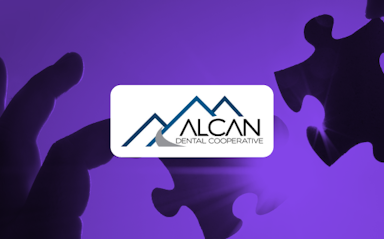Everything To Know About Dental Charting in 2023
Did you know that in a research conducted by Nathan L Brown and Victoria E Jephcote in 2017, 44% of the dental charts were inaccurate among the 1128 charts analyzed?
The significant errors they found included inaccurate tooth numbers, dental restorations documented on incorrect teeth, and even restorations completely missing from the dental chart.
Accurate dental charting is the backbone of dentistry, providing a roadmap to navigate patients' oral health. It visualizes your patient’s oral features, such as tooth conditions, existing restorations, and treatment plans.
The dental chart enables dentists to create effective treatment plans tailored to each patient's needs. Whether addressing cavities, gum disease, or other dental problems, having a dental chart ensures no critical information is overlooked, leading to better treatment outcomes.
As a beginner, you might have learned about dental charts and how to read a dental chart very well at the dental school. But things might get tricky when it comes to doing it for real.
This blog post will explore dental charting for beginners from the basics and its significance in dentistry.
History of Dental Teeth Chart
The history of dental charting systems dates back to ancient times, but the standardized dental charting system we use today has evolved over the last century.
Let’s take a walk back through the history of dental charts:
Ancient Dental Treatments Records
Some historical evidence suggests that the ancient Egyptians and Greeks kept records of dental diseases and treatments on papyrus rolls and other materials. However, these early records were rudimentary and lacked a standardized system.

Early Modern Era
The development of modern dentistry in the 18th and 19th centuries led to more formal attempts at dental charting. Early dental charts were often handwritten and varied from one practitioner to another. There was no standardization, and dentists used personal notations and symbols to describe dental conditions and treatments.
G.V. Black's Contributions

In the late 19th and early 20th centuries, the American dentist G.V. Black made significant contributions to dentistry, including the development of standardized dental charting. He introduced a classification system for dental caries based on the location and extent of the lesion. His classification system became widely adopted, forming the foundation for modern dental charting.
Universal Numbering System
The FDI World Dental Federation introduced the Universal Numbering System in 1971. This system assigns a unique two-digit number to each tooth, facilitating easier communication and teeth identification regardless of language or location
Understanding the Dental Tooth Chart

Dental charting is a systematic method of recording vital information about a patient's oral health. Dentists use diagrams and symbols to document tooth identification, existing dental conditions, and various oral aspects or pathologies.
This approach aids dentists in formulating tailored treatment plans and tracking patients' progress. Digital dental charting software available today facilitates efficient record-keeping and easy access to patient information.
A tooth surfaces chart also ensures dentists have a precise and up-to-date record of a patient's oral health.
By charting a patient's teeth and gums, you can identify dental issues such as cavities, gum disease, and other oral health problems and develop a personalized treatment plan to address the patient's specific needs effectively.
It allows dentists to track the progress of ongoing treatments, assess their effectiveness, and make adjustments as needed. Dental records have proven beneficial in cases of legal disputes or insurance claims.
The critical components of a dental chart include tooth numbering systems, symbols, and abbreviations.
Tooth Numbering Systems:
Tooth numbering systems allow us to identify and record specific teeth consistently. There are two primary tooth numbering systems:
a. Universal Numbering System: Each tooth is assigned a unique number, and the mouth is divided into four quadrants. The numbers range from 1 to 32, starting from the upper right third molar (1) and ending with the lower right third molar (32). The quadrants are numbered as follows:

b. Palmer Tooth Numbering System: Palmer’s notation is based on symbols representing each tooth. The mouth is divided into four quadrants, and each tooth is designated with a unique symbol.
In the Palmer Notation System, the primary teeth are represented using capital letters A to T, while the permanent teeth are represented using numbers 1 to 8. Quadrants are represented as follows:

For example, ‘UR1’ would represent the upper right permanent first molar, while ‘LLC,’ is the lower left primary canine.
Dental Charting Symbols
Dental teeth charts use symbols to convey specific dental conditions or procedures quickly and efficiently. Some common symbols used in dental charting include:
X - An extracted or missing tooth.
O - A tooth that needs extraction.
F - A filled or restored tooth.
C - A tooth with a crown (cap).
B - A tooth with a bridge.
R - A tooth that requires root canal treatment.
I - An impacted tooth.
Br - A tooth that requires braces or orthodontic treatment.
+ or ++ - Abnormalities or problem areas.
Dental Abbreviations
Dental charting abbreviations save space and simplify documentation. Some standard abbreviations include:
MO - Mesio-occlusal (a dental restoration involving a tooth's mesial and occlusal surfaces). DO - Disto-occlusal (a dental restoration involving a tooth's distal and occlusal surfaces). MOD - Mesio-occlusal-distal (a dental restoration involving all three tooth surfaces: mesial, occlusal, and distal). SRP - Scaling and Root Planing (a deep cleaning procedure for treating gum disease). RCT - Root Canal Treatment (also known as endodontic treatment). OHI - Oral Hygiene Instructions (educating the patient about proper oral care).
Dental Charting in Action

Before starting the dental charting process, collecting relevant patient information is crucial. This info includes the patient's full name, date of birth, contact information, and reason for the visit.
As the next step, a comprehensive medical and dental history is collected from the patient, including current medical conditions, past surgeries, allergies, medications, and systemic diseases.
The oral cavity, including the teeth, gums, tongue, palate, and other structures, will be thoroughly examined.
Findings will be recorded on the dental teeth numbers chart. Make sure to use a standard tooth chart to record the condition of each tooth. Any existing restorations, such as fillings, crowns, or bridges, as well as any areas of decay or enamel erosion, should also be noted.
Mark missing teeth, if any, on the chart and indicate the reason for the absence. Record the measurements of the periodontal pockets and note any signs of gum disease, such as bleeding, inflammation, or recession. Periodontal charting helps in diagnosing and monitoring gum health.
Include additional findings, such as oral lesions, anomalies, or abnormalities requiring further investigation or treatment.
Challenges in Dental Charting

Dental charting involves using specific dental terms to record various oral conditions. Beginners may need help understanding and remembering these terms. Interpreting and identifying oral conditions during a dental examination can be challenging. It requires knowledge of dental anatomy and the ability to differentiate between normal and abnormal findings.
Also, beginners may need more hands-on experience to accurately depict the dental chart and teeth numbers.
Different dental professionals may have other charting methods, leading to inconsistencies in record-keeping, which can create confusion when sharing information among team members.
Possible Errors in Dental Charting & How to Mitigate Them
a. Incorrect identification of dental conditions
To avoid misidentifying conditions, beginners should study dental anatomy and attend workshops or training sessions to enhance their diagnostic skills.
b. Inaccurate recording of data
Errors in dental charts can occur due to typos or misinterpretations of clinical findings. One way to mitigate this is by adopting electronic charting systems that provide prompts and validation to ensure accurate data entry.
c. Poor communication
Misunderstandings between team members can affect patient care, and incomplete or unclear dental charting is a major cause. Implementing standardized charting protocols and improving communication within the team can help prevent such pitfalls.
d. Missing important information
During charting, beginners may overlook specific data points, such as patient medical history or previous dental treatments. Regularly reviewing and updating patient records can help in capturing comprehensive information.
e. Data security and privacy concerns
Inaccurate handling of patient data or failing to adhere to privacy regulations can lead to legal consequences and ethical concerns. Dental professionals must be aware of data protection laws and maintain secure record-keeping practices.
Tips and Best Practices for Efficient Dental Charting

1. Use Standardized Charting Systems: Utilize established dental charting systems to ensure consistency and clarity when communicating with other dental professionals.
2. Digital Dental Charting Software: Embrace digital dental software for charting to streamline the process, reduce errors, and enhance accessibility to patient records.
3. Regular Training and Review: Ensure your dental staff receive proper training on charting procedures and periodically review and update their skills to maintain accuracy.
4. Double-Check Entries: Verify all recorded information for accuracy before finalizing the chart. Simple mistakes can lead to significant misunderstandings or treatment errors.
5. Document with Clarity: Use clear and concise language to describe findings and treatments. Avoid ambiguous abbreviations or terms that may be misinterpreted.
6. Collaborate with the Patient: Engage the patient throughout the charting process, explaining what you are recording and addressing any questions or concerns they may have.
7. Update Charts Regularly: Keep dental charts updated with each visit, noting changes in oral health and any treatments provided.
8. Backup and Security: Ensure secure storage and backup of digital dental records to prevent data loss and protect patient privacy.
Dental Charting Software

The transition from traditional paper-based dental teeth numbering charts to efficient and sophisticated digital dental charting systems was revolutionary.
Digital dental charting involves using specialized dental charting software to record, store, and manage patient data electronically, replacing the traditional pen-and-paper approach.
Benefits of Digital Charting Software
- Enhanced Accuracy: Digital dental charting reduces the risk of manual errors such as illegible handwriting or misplaced documents. With standardized data entry and intuitive interfaces, dental professionals can ensure that patient records are accurate and up-to-date.
- Accessibility and Mobility: Gone are the days of searching through stacks of paper files. Digital dental charting systems allow authorized personnel to access patient information securely from any location, facilitating seamless communication between dental professionals and enhancing collaborative care.
- Time and Cost Savings: The efficiency of digital charting streamlines administrative tasks, freeing up valuable time for dental staff to focus on patient care. Additionally, reducing paper usage translates to cost savings and a more environmentally friendly approach.
- Improved Patient Experience: Digital dental charting enables faster access to patient histories, treatments, and diagnostic images, resulting in more informed and personalized care. Patients will appreciate the convenience and responsiveness of a well-organized digital system.
Dental Charting Software Options for Dentists
Cloud-Based Solutions: Cloud-based dental charting systems offer flexibility, scalability, and enhanced data security. They allow seamless data synchronization across devices, making it easy for dental professionals to access patient information from anywhere with an internet connection.
Practice Management Software: Many dental practice management software solutions include digital charting modules as part of their comprehensive offerings. These platforms streamline various aspects of running a dental practice, from scheduling appointments to billing and patient communication.
Specialized Dental Charting Software: Some software providers offer dedicated digital dental charting systems tailored to the specific needs of dental professionals. These solutions often integrate with other dental imaging and diagnostic tools, creating a centralized hub for patient data.
Best 5 Dental Charting Software Solutions
CareStack is a cloud-based dental practice management software with advanced charting capabilities and features like scheduling, billing, patient communication, and analytics. Users can easily add procedures, conditions, and clinical notes and create patient-friendly treatment plans to improve case acceptance. It also offers quick access to customizable Odontogram and digital dental imaging.
Dentrix Ascend is a cloud-based dental charting and practice management software. It helps dentists save time with advanced dental clinic system software, digital imaging, and Perio charting. The intuitive charting tools enable dentists to record conditions, procedures, and treatment plans, streamlining patient care and improving communication between dental professionals and patients.
Eaglesoft provides comprehensive charting tools to document a patient's oral health status thoroughly. Dentists can record existing conditions, treatment plans, completed procedures, and more in a visual and organized manner.
Denticon comes equipped with numerous features that make charting faster and easier. This tool allows you to spend less time taking notes so that you can focus on other important tasks like marketing & patient care. Four tabs are found in the charting module - Restorative charting, Perio charting, X-ray, and Progress notes.
Curve Dental charting feature offers clear visuals that allow patients to comprehend their treatment procedures better. It offers color-coded treatment planning for better case acceptance. The two-step charting process makes it easier to chart a multiple-surface restoration, including a MOD, in seconds.
Conclusion
Dental charting is vital for beginners in dentistry, enabling accurate diagnoses and effective patient care. With proper training, attention to detail, and consistency, beginners can master this skill. Precise and clear charting ensures comprehensive records and streamlined workflows, enhancing communication between dental professionals. Embracing dental charting as a fundamental aspect of their practice, beginners can contribute to the success of their dental careers while providing optimal oral care to their patients.




